

Damion Smy
Ford Escape PHEV recalled for fire risk
5 Hours Ago
We want to talk about those new vehicles we've bought ourselves. In my case, it's a toy come to life.



Senior Contributor
New from
$25,990
excl. on-roads

Senior Contributor
New from
$25,990
excl. on-roads


Senior Contributor
New from
$25,990
excl. on-roads

Senior Contributor
New from
$25,990
excl. on-roads
Where expert car reviews meet expert car buying – CarExpert gives you trusted advice, personalised service and real savings on your next new car.
We’ve got a pretty diverse garage among the CarExpert staff.
From Alborz’s panoply of supercars, Paul’s Tesla Model 3 and old Commodores, Tony’s Mustang Bullitt and 911, Wongy’s Golf GTI, Mandy’s Porsche 356 replica, classic Beetle and Up, Will’s Genesis, Jin’s various bikes, Andrew’s Ford Everest… the list goes on.
My vehicle covered here is a little different to this field. The most recent new car I purchased was a 2019 Suzuki Jimny, the cheapest hardcore 4×4 money can buy.
There are always press evaluation vehicles rotating through my garage, so the cars I actually own aren’t going to be daily drivers. Therefore there’s no need for them to be sensible, practical, or in any way prosaic.

But what was the rationale for buying this tiny box on wheels?
It was four years ago when I interviewed a senior Suzuki engineer visiting from Japan, who excitedly admitted plans for a new Jimny were well underway. From that day, I’d kept the desire for one in my head. I loved Suzuki’s willingness to break away from homogeneity.
It reminds me of the paddock bashers I learned to drive in, on the farm, as a teenager. Plus as someone who lives in the city and appreciates a runaround that’s parkable anywhere, it’s diminutive enough to fit that bill too.
But the main reason I bought it was because… well, look at it. If it doesn’t make you smile and laugh – even if that laughter is at me, not with me – then you’re a hard marker indeed.
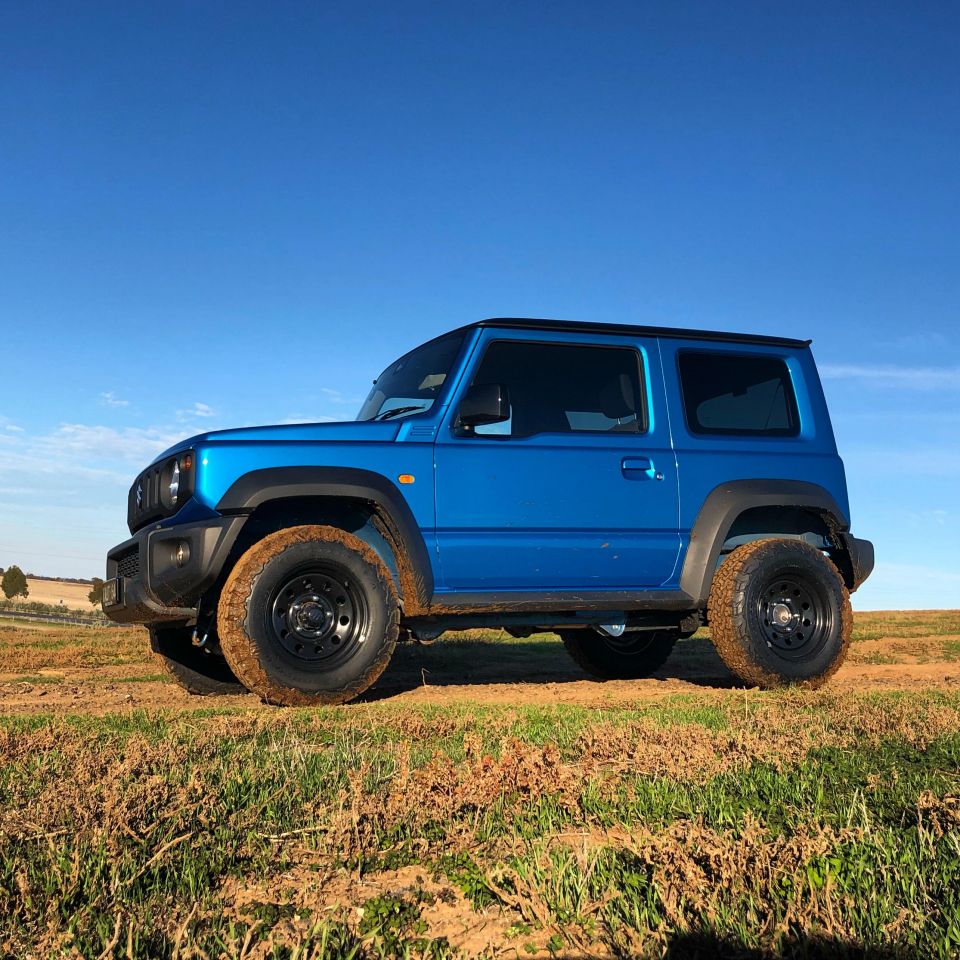
There have been huge waiting lists on the Jimny, in some cases more than a year. The factory in Japan simply cannot churn out enough of them.
I pulled a bit of a swifty, by ordering mine off the back of my first review drive in January of 2019. Therefore I dodged the worst of the waiting list and took delivery at the end of April 2019. My industry connections might have helped there.
Now I know what you’re thinking, but let me head this off at the pass: I neither asked for, nor took, some back-scratching friendly deal. That would undercut my objectivity.
The total settlement amount on the road was $29,240.

Really good. Cath at Brighton Suzuki kept me in the loop and the delivery process was a snap. That said, I know at least one person in WA who found a (different) Suzuki dealer a little evasive regarding the seemingly interminable wait for his Jimny. He ended up cancelling his order.
As ever with franchise dealers, it’s a mixed bag.
Suzuki is not a brand with huge, garish showrooms. There wasn’t a big shiny bow on my car, nor was there a song-and-dance. It was ideal for my tastes: a quick call telling me the car had arrived, and a quick handover process.
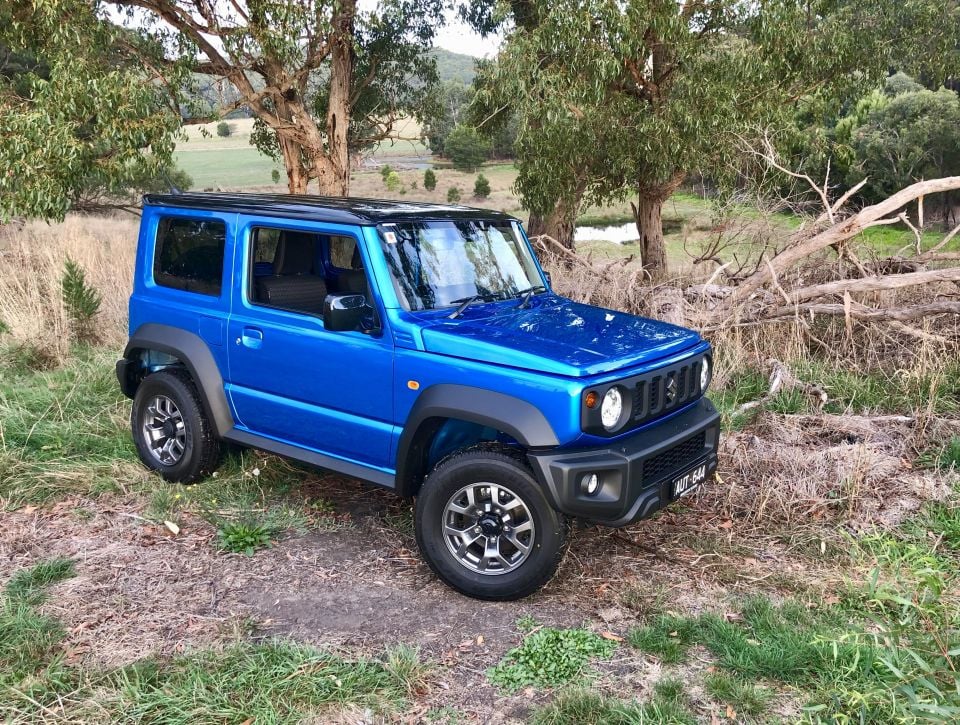

I have since grabbed a set of BFGoodrich ATs on 15-inch Dynamic steel wheels for $1400-odd all up at Bob Jane. By the way, I still have a set of five original Jimny wheels in my shed if anyone wants to make me an offer.
I dropped $250 on a front grille accessory add on. It’s a factory part but I bought mine on ebay. Fitting it involved unclipping the old slotted grille piece and unscrewing it from some brackets mounted behind the LED headlight units, then replacing. It was about a 30 minute job with a screwdriver.
I also keep the back two seats folded most of the time, and have a factory accessory hard fitted plastic tub liner that Suzuki threw in for me.
I’ve been meaning to talk with ARB about some new springs (50mm lift), shocks, and a panhard rod. I just never seem to get around to it. I know, I know…
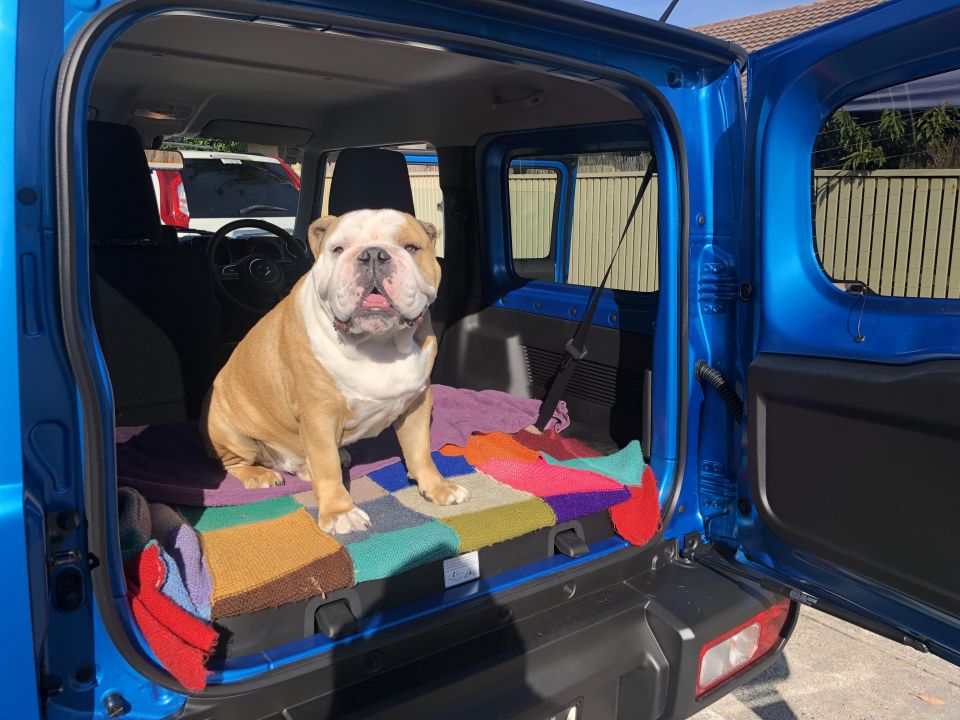
I can’t keep track of how many random people have asked about it, smiled at it, given me a thumbs up. Blokes come to chat at servos, campers in LandCruisers come to kick the tyres, kids stop and point while tugging at their Mum’s sleeves. Seriously, it gets as much attention as a supercar. Not the same kind of attention, of course.
The fact I’m a shade under two metres tall means I look pretty silly driving it, with my arms dangling all the way down the door.

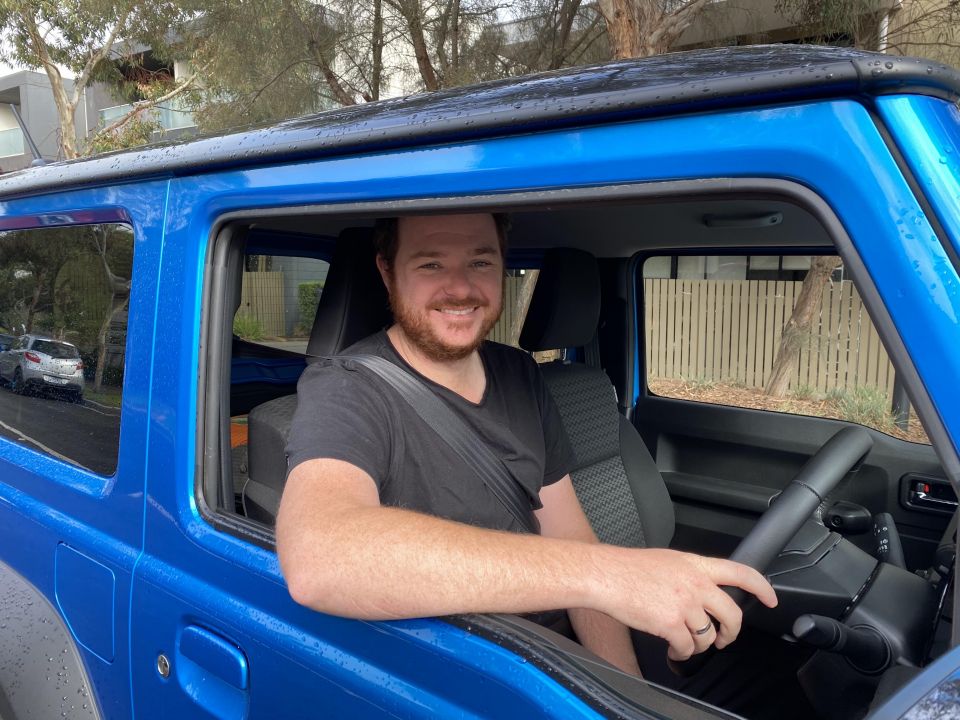
It’s a 3.5-metre long, body-on-frame 4×4 with three-link rigid axles at each end and coils at each corner. This is no sports car.
It shines around town, thanks to huge windows and slim pillars, negligible overhangs, an elevated ride height, and a decent reversing camera.
Acceleration is stately. It only weighs 1095kg (plus my 108kg), but its 1.5-litre petrol engine’s 75kW and 130Nm is hardly awe-inspiring.
It’s fun to row through the manual gearbox’s five gears though – it has a long throw, and is a little notchy, but you really need to be able to control your engine speeds manually to have fun in something this gutless.
Rev-matching on downshifts in a cereal box on wheels always entertains. As does revving at idle, causing the car to wobble side to side like a cork in the ocean.
I wish Suzuki had fitted a six-speed ‘box though, because 3500rpm at 110km/h is a fairly deafening experience, and its thirst for fuel (10L/100km) gives you a 350km range at best.

The extra sprung mass of the steel wheels and slightly wider tyres does mean the OEM suspension battles, and honestly if I drove it more I’d have replaced the stock stuff out already. I’ve only done a few thousand clicks since the wheel swap, and about 11,000km all up. It crashes over sharp hits quite badly.
Off-roading, it’s beyond reproach. You can place it on a dime, and its lightness and fearsome approach (37 degree) and departure (49 degrees) angles mean you can dive headlong into obstacles.
Even in low-range, it demands high revs. You need to drive the absolute wheels off it, because there’s really very little low-end torque here. It’s as tractable as slingshot.
The key to maximising its ability hopping up rutted goat tracks, sloshing through muddy trails, or fording streams shallower than its lowish intake, is to point and go, and to go hard. Keep that throttle as pinned as you prudently can, and let that brilliant 4×4 system pull you up.
Every bit of body movement is exaggerated. At a 15-degree side angle you feel ready to tip over. But that’s part of the charm. Its smallness and simplicity mean it’s incredibly engaging to pilot: you can see where your wheels are at all times, feel the tyres catching or slipping, and hear the driveline whining when off throttle.
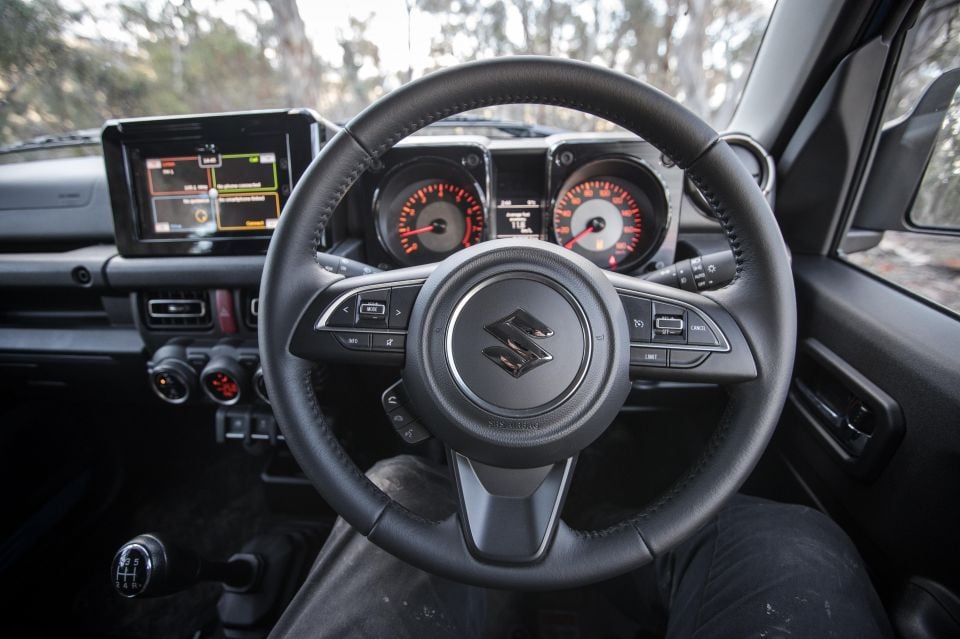
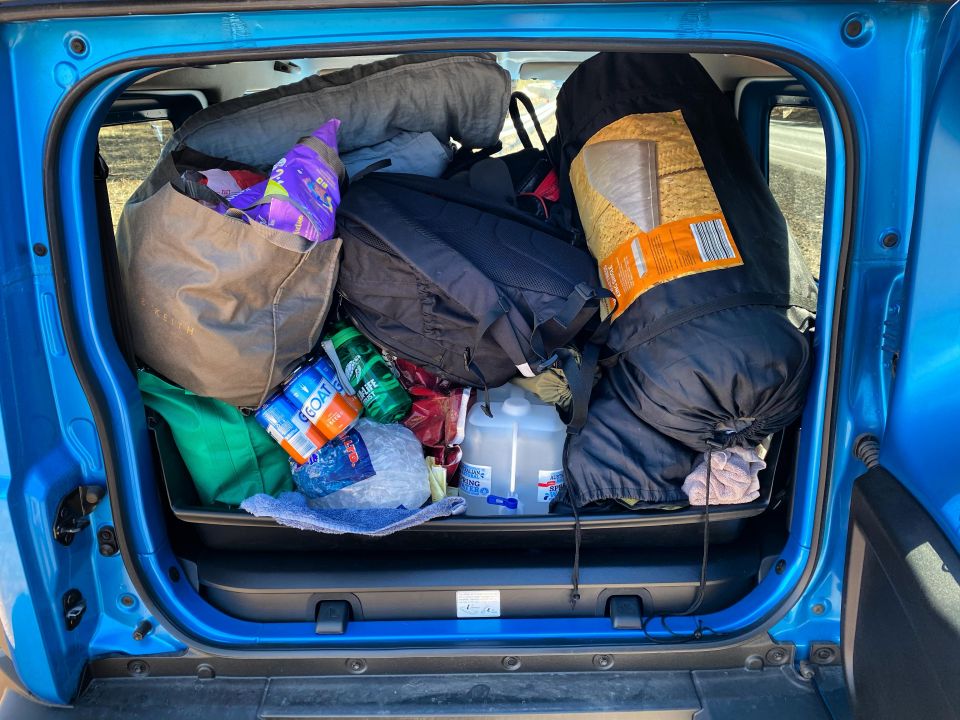
Very retro, from the chunky HVAC controls, to the rocker switches below to operate the electric windows and engage downhill assist, the horizontal passenger grab bar, the ’80s chic analogue instruments, exposed screws, and separate 4×4 shifter.
It’s made of cheap but hardy plastic, and is screwed together perfectly. No rattles or squeaks here. The roofline is also tall enough for me to easily fit, though the lack of telescopic steering wheel adjustment is a pain.
The back seats, believe it or not, can fit two adults. I won’t suggest that it’s a fun car to drive four-up in, but it’s technically possible.
There are some mod cons, including a 7.0-nch centre touchscreen with sat-nav, and cruise control. Plus the leather-wrapped wheel is genuinely lovely.
The crash rating is only three stars, but it does have AEB and lane-departure warning. I have yet to experience the heard-of AEB glitches, which is good, and the fact I can keep my lane assist system switched off is ideal.
I’m not at all opposed to these systems, but at times they do get intrusive and it’s nice that you need to opt out just once.
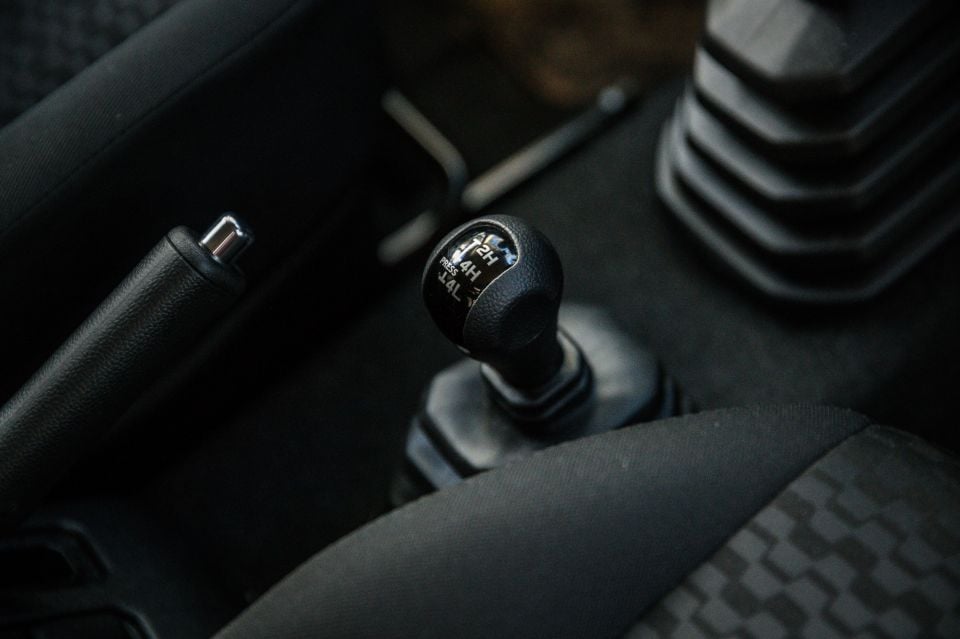
Not many. The infotainment system has wired Apple CarPlay and Android Auto, but Suzuki clearly purchased the cheapest system it could find because it regularly doesn’t engage the phone mirroring function. At least the Bluetooth is more reliable.
The six-monthly/10,000km intervals at launch were a bit rubbish for a basic engine. The first visit was $269, the second a more reasonable $175. But the company has since moved to annual or 15,000km intervals.
It was a quick job, and the service staff were friendly enough and efficient. No problems there.

Cheap, rugged, driven more rarely than it ought to be.
Stay tuned for more updates, this format has been designed to handle updates. I’ll flag any and all changes in a running blog style above.
Where expert car reviews meet expert car buying – CarExpert gives you trusted advice, personalised service and real savings on your next new car.


Damion Smy
5 Hours Ago


Josh Nevett
6 Hours Ago


Max Davies
14 Hours Ago


Ben Zachariah
1 Day Ago


Max Davies
1 Day Ago
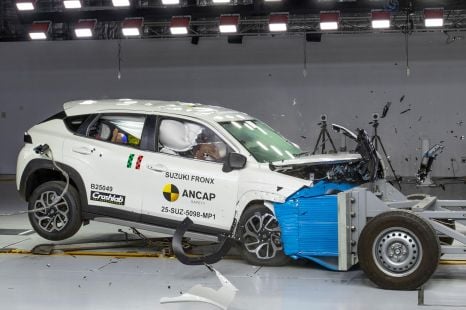

Damion Smy
2 Days Ago